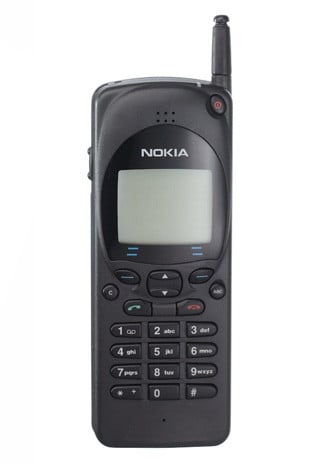Chapter Four - Working in the Digital Age
As the years go by, there is a constant update in technology. This is what resulted in the creation of multimedia as well as an online newspaper. An online newspaper is basically an online version of a newspaper. With the constant use of telephones as well as the internet, toward the later 1900s, online newspapers were created. For photojournalists, this meant being able to share their images not only in a physical paper but an online version as well.
With the creation of online newspapers came the use of multimedia. Multimedia could vary from texts, audio files, GIF’s or images. According to Caleb Cox’s article 20 years of GSM digital mobile phones, Nokia 1011 was subsequently the first compatible handset to go into mass production. This phone was capable of sending text messages which assisted in the communication of photojournalism from different people. In regards to GIFs, The GIF, Fernando Alfonso III wrote in The animated history of the GIF, the internet’s favorite format that GIF’s or graphics interchange format, was introduced to the world by CompuServe in 1987. Both multimedia and online newspapers helped photojournalism in one way or another.

With the creation of online newspapers came the use of multimedia. Multimedia could vary from texts, audio files, GIF’s or images. According to Caleb Cox’s article 20 years of GSM digital mobile phones, Nokia 1011 was subsequently the first compatible handset to go into mass production. This phone was capable of sending text messages which assisted in the communication of photojournalism from different people. In regards to GIFs, The GIF, Fernando Alfonso III wrote in The animated history of the GIF, the internet’s favorite format that GIF’s or graphics interchange format, was introduced to the world by CompuServe in 1987. Both multimedia and online newspapers helped photojournalism in one way or another.
Nokia 2110 (1994) Image of The register
Photogravure which is a pre-digital technology was created with the intention of having a print that could be kept for a long period of time and would not fade. This method was what drew newspapers to begin using the process as well. Unfortunately, this process was not adopted for long because of how long the process took and how it was not capable of producing multiple images at once. The rotogravure process was used because according to professor Nordell in the video Before There Were Pixels - Part 1, using this process, newspapers could print many many prints and it came out well and was fairly effective. The differences between this pre-digital technology compared to more digital technology such as an online newspaper and multimedia is drastic. While a photogravure process had assisted photojournalism with newspapers, online newspapers have become of much more assistance to them. With the use of online newspapers, now photojournalists to share their images and works with people all over the world rather than people from one country or section of the world as newspapers would have.
Although photogravure had also helped in the printing of illustrations in books, it is nothing compared to how multimedia can be used in sharing photojournalistic images from one individual to another all over the world. This could be via text, a GIF of the event or an audio file that could describe the nature of the image. This has been proven when various events occur. An example was during the hurricane sandy when the hurricane had to be broadcasted using a mobile phone. An article by Jeff Bercovici explained that Time's Instagram account attracted 12,000 new followers during a 48-hour period. The use of Instagram definitely attracted people however because of multimedia, the news about the broadcast was shared among various people. This is one of the reasons why people ended up on Instagram and how Time's got so many followers. As online newspapers became more common, newspapers began to disappear. According to professor Nordell in Working in the Digital Age - Part 2 video, newspapers have gone out of business and Newsweek which was one of the news magazines suddenly stopped its production of the newspapers.

Image from Sleepytime Gorilla museum
Although online newspapers and multimedia are amazing, all good things tend to have a downside. In the article Photojournalism in the Age of New Media, writer Jared Keller explains that new media also comes with challenges for photojournalists: while a single snapshot may tell a thousand-word story, the trick is to get that story right. This is because due to the ability of anyone to comment, it becomes more difficult for the photojournalists to keep the story right and not have it change after it is shared. Overall, although both technologies had their advantages and disadvantages, digital technologies are of more assistance to photojournalism than pre-digital technologies.


Comments
Post a Comment